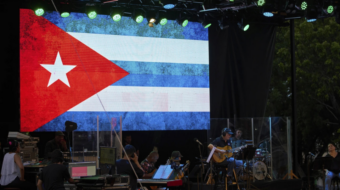
On July 16, 1934, the city of San Francisco shut down as 65,000 workers from all industries walked off the job, in response to a call by longshore workers for a general strike. The call was supported by the San Francisco Labor Council.
It came after the brutal “Bloody Thursday” of July 5, in which 5,000 workers fought 1,000 police, scabs, and National Guard troops as employers tried to break a San Francisco longshore strike. Two strikers were killed, and 109 people were injured.
The key issue was the longshore workers’ demand for union control instead of employer control of hiring halls. The shipowners’ association had established the “shape up” hiring hall as a way to break union power. The employer-controlled system’s abuses included under-employment, low earnings for many, long and fruitless waits at the docks, favoritism for corrupt gangs, and petty graft as the price of jobs.
The four-day San Francisco General Strike ended with an agreement on arbitration in which most of the striking longshoremen’s demands were met.
The International Longshore and Warehouse Union was born out of the labor struggles that shook the West Coast in the 1930s. In 2009, the 75th anniversary of the San Francisco General Strike, the ILWU commissioned a special exhibition containing fascinating information about the 1934 strike.
Photo: Today in Labor History…










